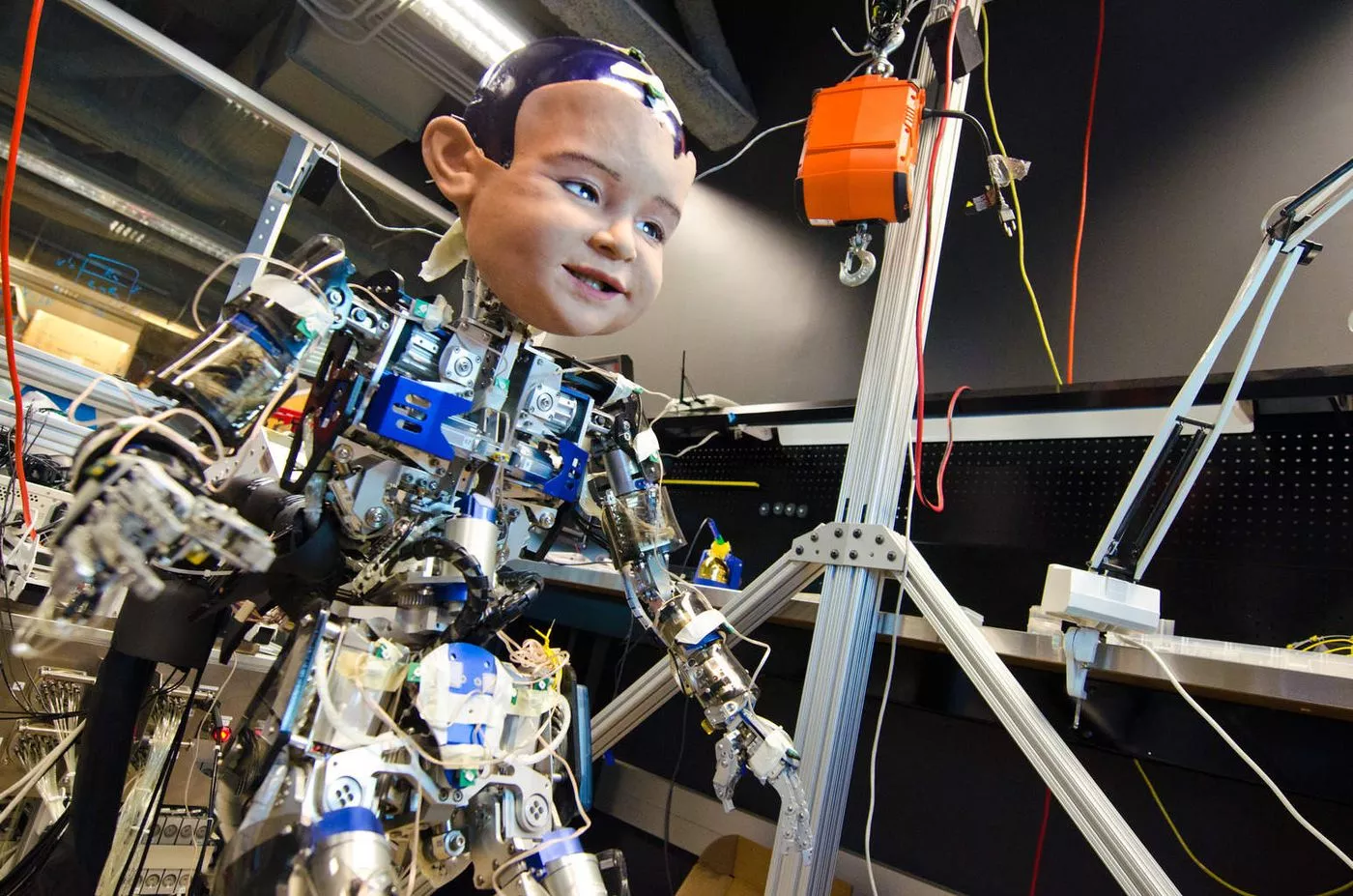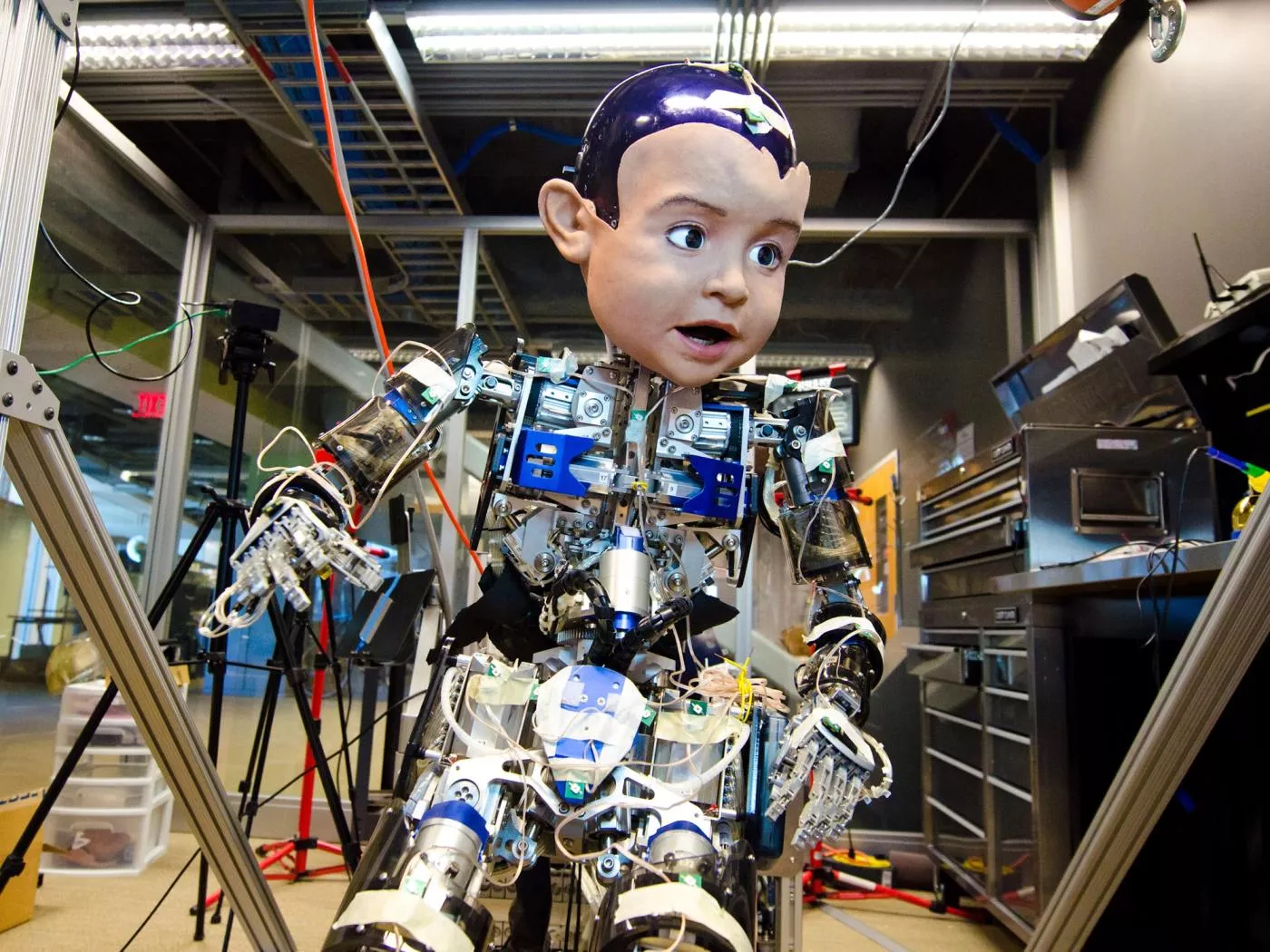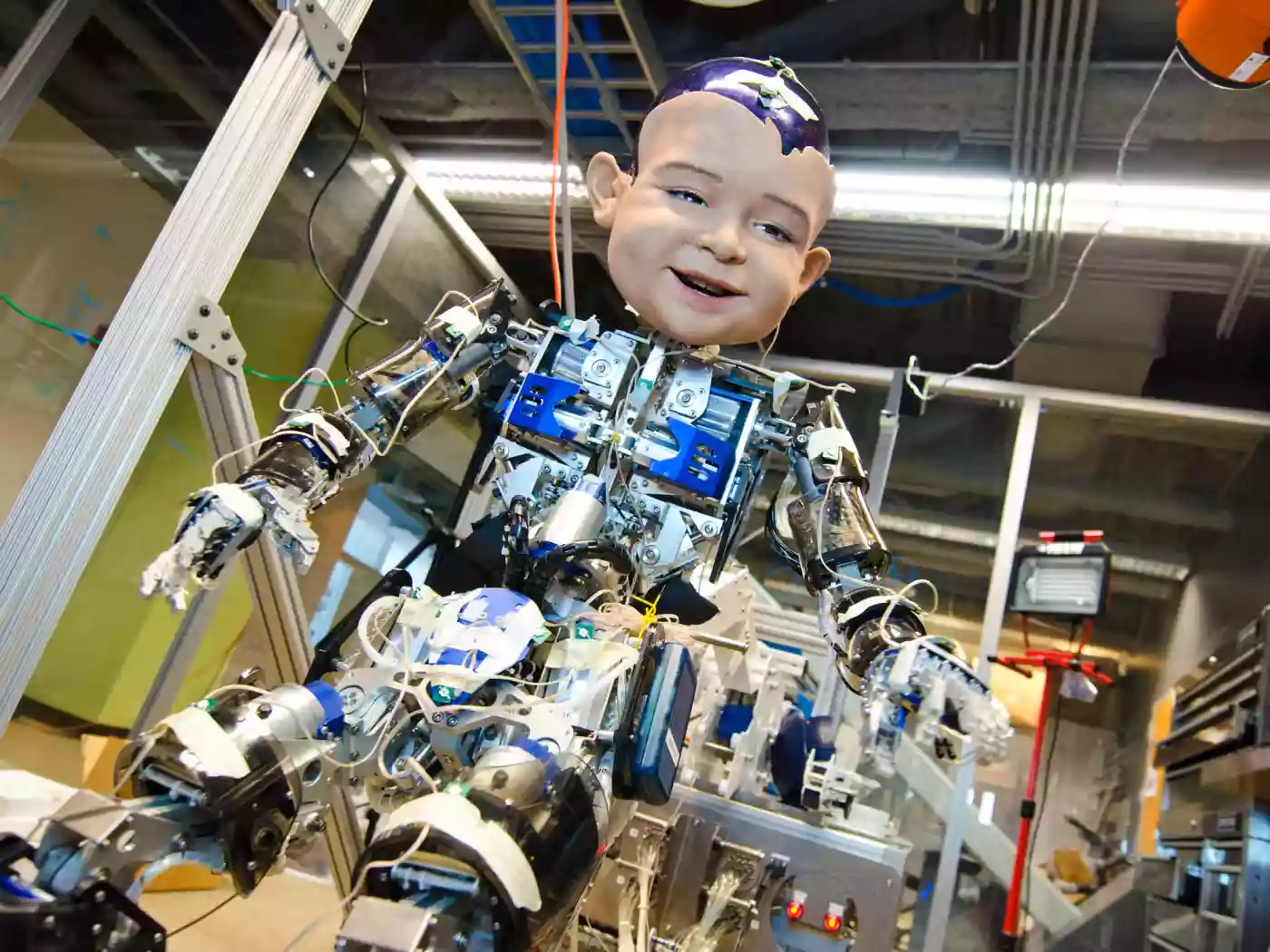Diego-san Humanoid Robot: Product Overview
Technical Specifications
| Specification | Value |
|---|---|
| Model | Diego-san |
| Year | 2010 (Activated in 2013) |
| Height | 130 cm (4 ft 3 in) |
| Width | 70 cm |
| Weight | 35 kg (66 lb) |
| Sensors | Two Point Grey Dragonfly2 cameras, two microphones, two inertial measurement units, 38 potentiometers, 88 pressure sensors |
| Actuators | 44 pneumatic actuators (body), 18 electric RC servos (face) |
| Degrees of Freedom (DoF) | 71 (Head and neck: 4 DoF; Trunk: 4 DoF; Arm: 8 DoF x 2; Hand: 3 DoF x 2; Leg: 7 DoF x 2. Each pneumatic joint has 2 degrees of freedom: position and compliance.) |
| Materials | Aluminum structure, acrylic shell, and rubber face. |
| Compute | Intel Xeon 2.8 GHz computer with 12 cores. Analog sensors and pneumatic actuators connected using a National Instruments DAQ. |
| Software | Ubuntu Linux OS, ROS (Robot Operating System), OpenCV, Python/Matlab/C++ |
| Power | Compressed air from external compressor |
Key Features & Benefits
- Cognitive Development Research: Designed to study cognitive and social development in infants.
- Expressive Face: 27 servo motors controlling an expressive face capable of mimicking various emotions.
- Compliant Joints: Equipped with compliant joints driven by agonistic-antagonistic actuators.
- Sensory Input: Equipped with high-definition cameras and microphones.
Target Applications
- Cognitive Development Research: Studying cognitive and social development in infants through human-robot interaction.
- Sensory-Motor Skill Development: Studying the development of sensory-motor intelligence from a computational viewpoint.
- Understanding Human Communication: Researching how infants use facial expressions to establish relationships and communicate with others.
- Developing Social Robots To push technological limits of robotics artificial intelligence
Use Cases & Scenarios
- Mimicking Infant Expressions: Producing a range of infant-like facial expressions for use in development of human interaction software.
- Facial Expression Analysis: Studying sensory-motor and social development, and how babies learn to control their bodies and interact.
- Analyzing Sensory-Motor Skills: Gaining understanding of social development through sensory-motor skills.
- Research with Robots and Toddlers: Interacting with robots and toddlers.
- Natural communication mimic: used in UCSD's work with natural communication, such as reading and mimicking facial expressions.
Unique Selling Points
- Infant-Like Design: Modeled after a 1-year-old baby to closely mimic infant behavior.
- Highly Expressive Face: 27 servo motors enabling a wide range of realistic facial expressions.
- Pneumatic Actuation: Compliant joints driven by pneumatic actuators for more natural movements.
- Research Platform: Created as a research tool for studying cognitive development.
Industries Utilized
- Robotics Research
- Cognitive Science
- Developmental Psychology
Competitive Advantages
- Realistic facial expressions and movements based on Hanson Robotics' expertise.
- Pneumatic system for compliant joints. *Designed to study cognitive and social development in infants. *Designed to approximate the complexity of a human body
More Information
Diego-san combines a Hanson Robotics-created head and a body by Japan’s Kokoro, was designed to approximate the complexity of a human body, including the use of actuators that have similar dynamics to that of human muscles. The goal of the project was to make progress on computational problems that elude the most sophisticated computers.
Other Robots of Hanson Robotics
- Sophia: Advanced human-like robot known for her AI and social interaction capabilities.
- Albert HUBO: Walking humanoid robot with Albert Einstein's head on a HUBO robot body.
- BINA48: Humanoid robot consisting of a bust-like head and shoulders mounted on a frame.
- Han: Expressive humanoid robot with masculine features focused on serving and helping others.
Pricing and Availability
- Pricing: N/A (Research prototype, not commercially available)
- Brochure: N/A
- Demo Request: N/A
- Technical Whitepaper: N/A
Competitor Products
- CB2 (Osaka University): Another android infant designed for studying human interaction, with improvements incorporated into Diego-san.
- Roboy (Swiss researchers): A nearly 4-foot-tall robot toddler with a face selected via a Facebook contest.
Extra Information
Diego-san was designed to study cognitive development of infants, with a body built by Japanese animatronic company Kokoro and head created by Hanson Robotics. The robot was activated in 2013 and featured 27 servo motors in his expressive face. The project received funding from the National Science Foundation.
The construction integrates a robotic body from Kokoro with the head created by Hanson Robotics. Key to the design was replicating the statistics of early physical and social interaction. The robot is a product of the “Developing Social Robots” project launched in 2008 with funding from the National Science Foundation. A startup has been developed by UCSD, called Machine Perception Technologies (MPT), that is building an expression recognition technology


